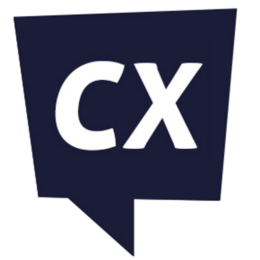The COVID-19 pandemic has led marketers and advertisers to step back and re-evaluate their current strategies. Due to the drastic impact of the outbreak and to help protect cash flow, many businesses have resorted to drastic cuts in their marketing and advertising budgets. In fact, 44% of CMOs reported budget cuts in 2020. However, this doesn’t mean marketing and advertising should fall by the wayside. Businesses are still relying on advertising and marketing campaigns to bring in a steady stream of income and drive revenue back to the organisation.
With drastic budget cuts, businesses are looking for ways to get more bang for their buck and implement strategies where they can quickly and visibly see the return on their investment. With the traditional events and trade shows no longer an option, many businesses have pivoted their strategies to focus on paid advertising and other measurable advertising channels to drive customers to their site. But, there is one often-overlooked flaw: phone calls triggered by paid advertisements often go unnoticed.
When receiving a phone call from a customer, manually attributing and tracking that call can cause businesses with limited time and resources to struggle. Call tracking gives them the missing ingredient to gain insight into ROI while providing an additional look into the actual performance of the ad. Let’s take a deeper look into how call tracking can help marketers better allocate their budgets while still driving revenue.
Save Time and Resources
Employees are required to wear many different hats, which can cause certain tasks like answering phones to slip off the radar. But, on the other hand, good customer service is essential to running a successful business. To fill the gap, many businesses turn to a call centre as they are better equipped to answer a high volume of calls. For marketers and advertisers running an ad campaign, call centres have the resources to manage the inbound calls from the various channels an organisation may use.
The downside to using a call centre is that these employees may be answering a hundred calls a day. They don’t have the time or staff to ask every customer how they heard about the company, because they are focused on helping solve a customer problem or closing a sale.
This is where call tracking comes in. Call tracking assigns a tracking number to the ad campaign, allowing marketers and advertisers to track all inbound communications and know what campaign drove them to make a call. This makes it easier for the call centre agent to answer any questions a customer may have efficiently while still providing necessary insights to the marketing and advertising team.
Track Key Performance Indicators
Key performance indicators (KPIs) are essential for measuring the success of an ad campaign. Without KPIs, it is impossible to determine whether the goals you’ve set have been hit through the campaign. KPIs should be determined before the launch of the campaign and should focus on the three main marketing funnel phases –– awareness, engagement and conversion. Once these KPIs are determined based on each phase, marketers and advertisers can focus on the KPIs for each marketing channel. This shows marketing and advertising teams what channel was most successful driving calls and revenue, which resonates for customers in each step of the funnel and allows them to better strategise for the future.
Additional KPIs can also be set for the calls received in each campaign. Additional metrics such as the length and quality of conversations generated will be useful in future campaigns.
Prepare Your Sales Team
While quantitative data is helpful in helping marketing teams determine how successful a campaign is, qualitative data can be useful when focusing on driving revenue. Call tracking and call attribution can be used throughout the various phases of the marketing funnel, it can also be used to qualify a lead for the sales team.
If a customer is reaching out after receiving an ad, it is likely that they are interested in the product or service the company is offering. Through call tracking, a business can track every conversation. With each call, the company can gather information such as the customer or potential customer’s name, number and company name. For sales teams, this helps eliminate the need for cold calling and provides the information needed to make the conversion.
When running an ad campaign, phone calls are one of the most important factors when looking to boost ROI, though many are unaware of its impact. As businesses prepare for 2021 and budgets are more stringent, it is time for marketers to implement a data-driven approach to calls. Through call tracking, businesses can quantify their spending and continue to drive revenue –all while still providing customers with the best service.
Guest Blog by Jason Smith, Sales Engineer, Call Tracking Metrics






